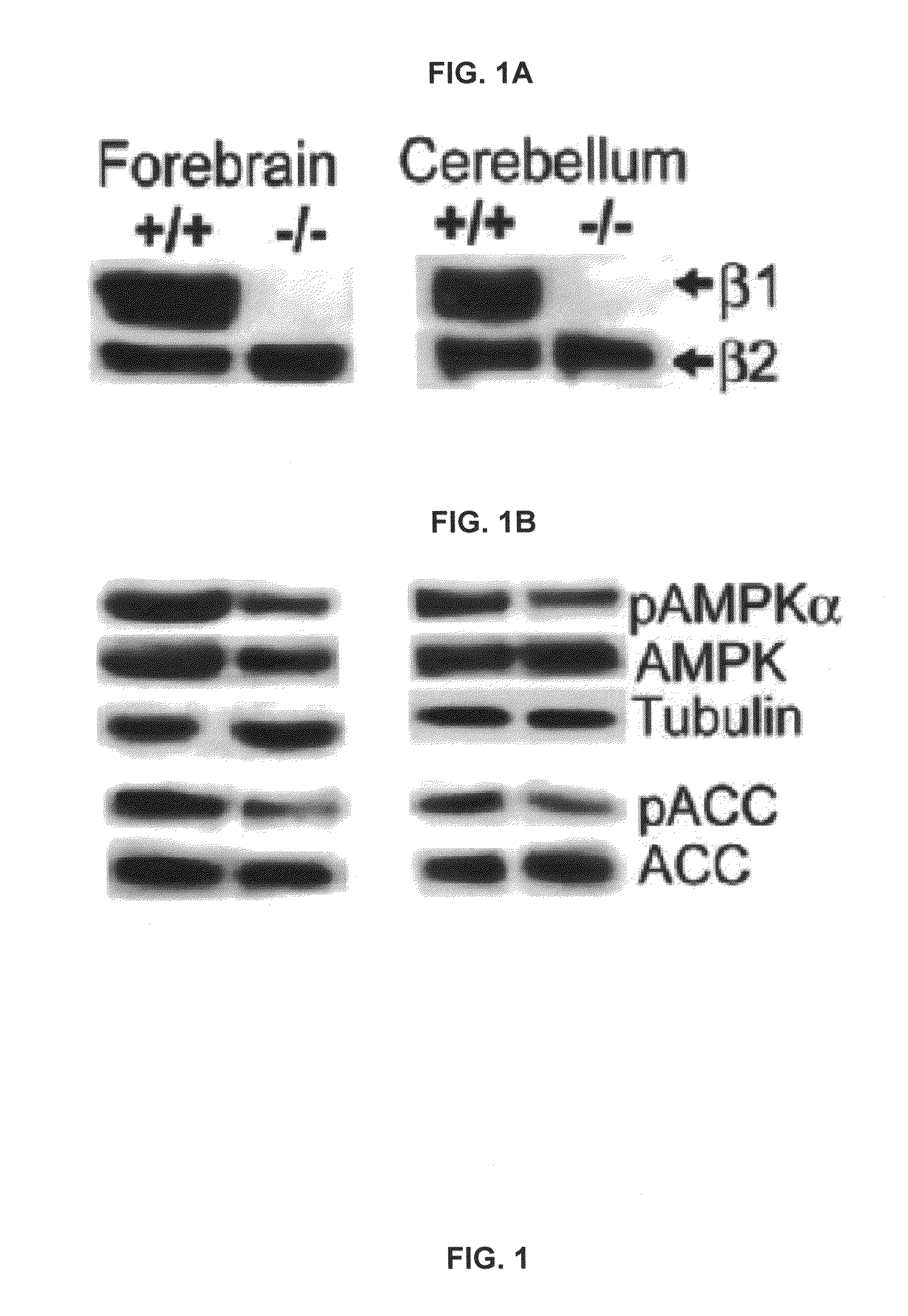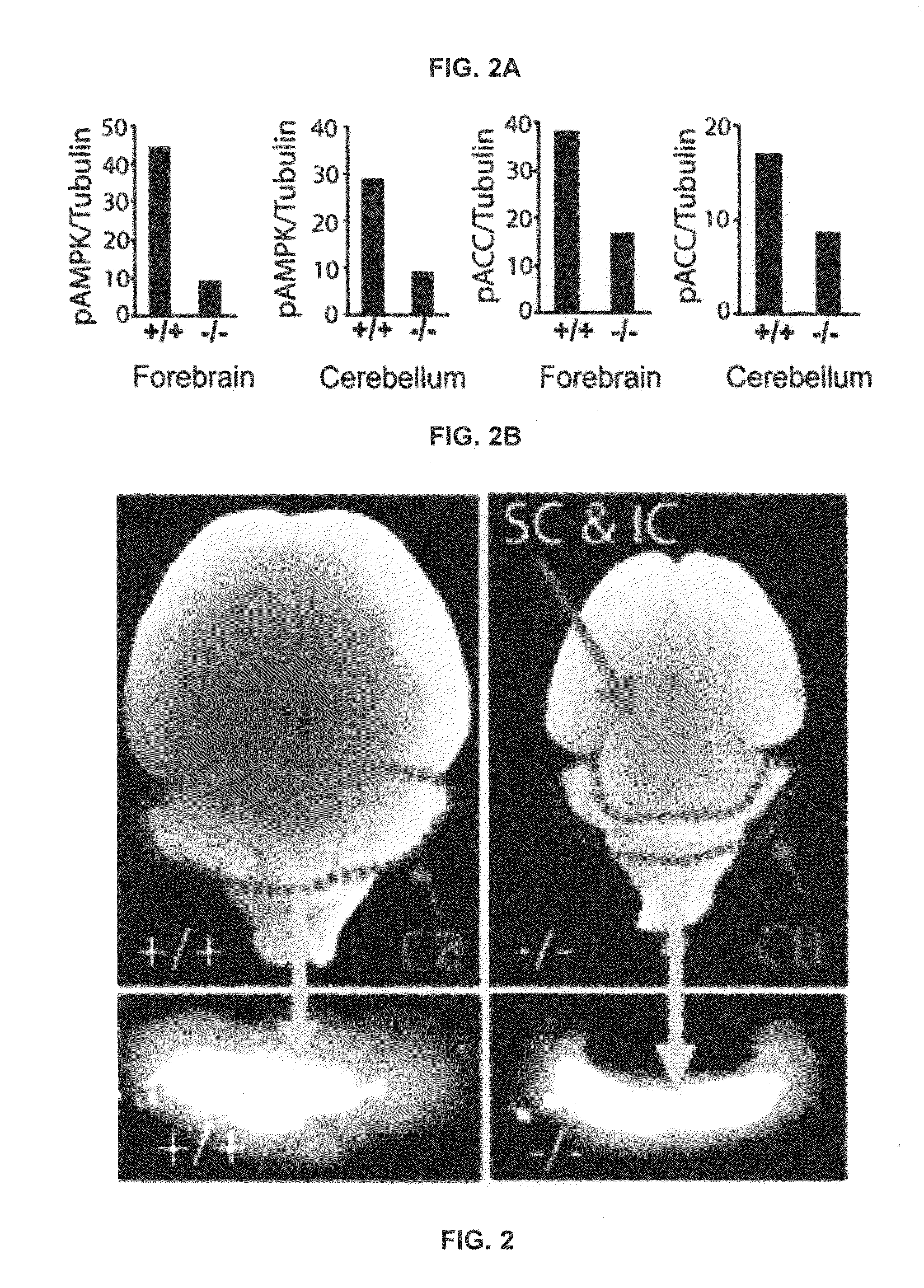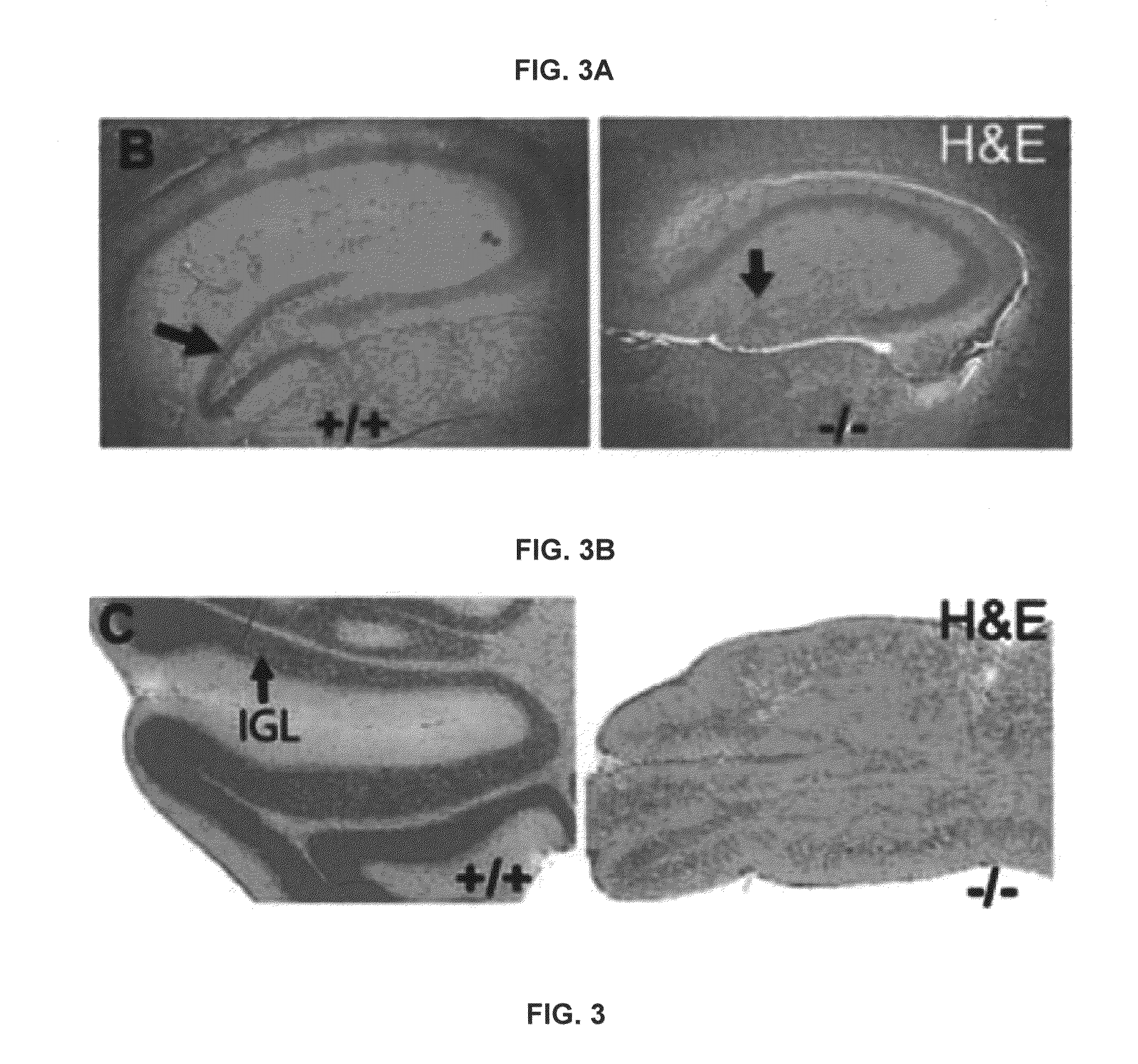AMPK modulation as a method of regulating stem cell and cancer stem cell proliferation, self-renewal and differentiation
a stem cell and auto-renewal technology, applied in the field of ampk modulation as a method of regulating stem cell and cancer stem cell proliferation, self-renewal and differentiation, can solve the problems of achieve the effects of reducing apoptosis enhancing the self-renewal of cancer stem cells, and increasing the proliferation of cancer stem cells
- Summary
- Abstract
- Description
- Claims
- Application Information
AI Technical Summary
Benefits of technology
Problems solved by technology
Method used
Image
Examples
example 1
Generation of AMPKβ1 Mutant Mice
[0112]To investigate the biologic roles of the AMPK β1 subunit, we generated mutant mice using ES cells in which the β1 gene was interrupted by the insertion of a βgeo cassette (henceforth called β1− / − mice). The insertion created a βgeo-β1 fusion protein containing exons 1-5 of β1. This produces a mutant β1 protein lacking the terminal 46 amino acids (FIG. 27A-D; FIG. 28A, B). This deleted domain is highly conserved in the closely related AMPK β2 protein and is required for the generation of the active AMPK heterotrimer through interactions with both the α and γ subunits (Iseli, T. J., et al., J. Biol. Chem. 280, 13395-13400, 2005). We confirmed the existence of a single βgeo integrant at the predicted site in the β1 locus by Southern blot analysis, PCR genotyping, RT-PCR analysis and nucleotide sequencing (FIG. 27A-D; FIG. 28A, B). We detected the β1-βgal fusion protein by immunoblotting with a β-gal antibody in lysates from multiple tissues, includ...
example 2
AMPK β1− / − Mice Display Structural and Functional Brain Abnormalities
[0114]The β1− / − mutant mice were born in a proper Mendelian ratio, but failed to gain weight normally and were clearly emaciated by postnatal day 14 (P 14) (FIG. 30A, B). They displayed severe tremors, ataxic gait and seizure-like activity and died by P21.
[0115]As illustrated in FIG. 2A and FIG. 2B, we demonstrate that AMPKβ1-deficient mice show reduced AMPK activity and manifest brain abnormalities. FIG. 2A provides a densitometric analysis of immunoblot data from FIG. 1. FIG. 2B presents a macroscopic view of WT and β1− / − brain at P14 (lower panel outlined by dotted line in upper panel) in β1− / − mice. CB, cerebellum; IC, inferior colliculi; SC, superior colliculi. Most notably, an examination of P14 β1− / − animals revealed a 50% reduction in overall brain size with severe cerebellar atrophy and marked reduction of the cerebral cortex resulting in improper cortical fusion and exposure of the superior (SC) and infer...
example 3
Neuronal and Glial Deficits in β1− / − Mice
[0118]In these experiments, neuronal and glial distribution in β1− / − mice was examined (FIG. 6, FIG. 7 and FIG. 8). The data shows that these mice have both neuronal and glial CN deficits. As shown in FIG. 6, immunohistochemistry with an antibody against MAP2 and Bielschowsky's silver staining demonstrated widespread losses of dendritic processes and white matter axonal projections in these mutant mice, indicating that absence of β1 causes loss of neurons and neuronal processes. FIG. 6A: immunohistochemistry showing dendrites. FIG. 6B: silver staining showing axonal tracts, and adenomatous polyposis coli (APC) immunohistochemistry showing oligodendrocytes in the P14 brain. As shown in FIG. 7A, Myelin basic protein (MBP) immunohistochemistry shows myelination in the P14 brain. FIG. 7B provides an electron microscopic analysis of P14 β1− / − optic nerves. FIG. 7C presents a quantification of CFAP* cells in WT and β1− / − brains. *p=0.01, **p=0.002....
PUM
| Property | Measurement | Unit |
|---|---|---|
| pH | aaaaa | aaaaa |
| pH | aaaaa | aaaaa |
| pH | aaaaa | aaaaa |
Abstract
Description
Claims
Application Information
 Login to View More
Login to View More - R&D
- Intellectual Property
- Life Sciences
- Materials
- Tech Scout
- Unparalleled Data Quality
- Higher Quality Content
- 60% Fewer Hallucinations
Browse by: Latest US Patents, China's latest patents, Technical Efficacy Thesaurus, Application Domain, Technology Topic, Popular Technical Reports.
© 2025 PatSnap. All rights reserved.Legal|Privacy policy|Modern Slavery Act Transparency Statement|Sitemap|About US| Contact US: help@patsnap.com



